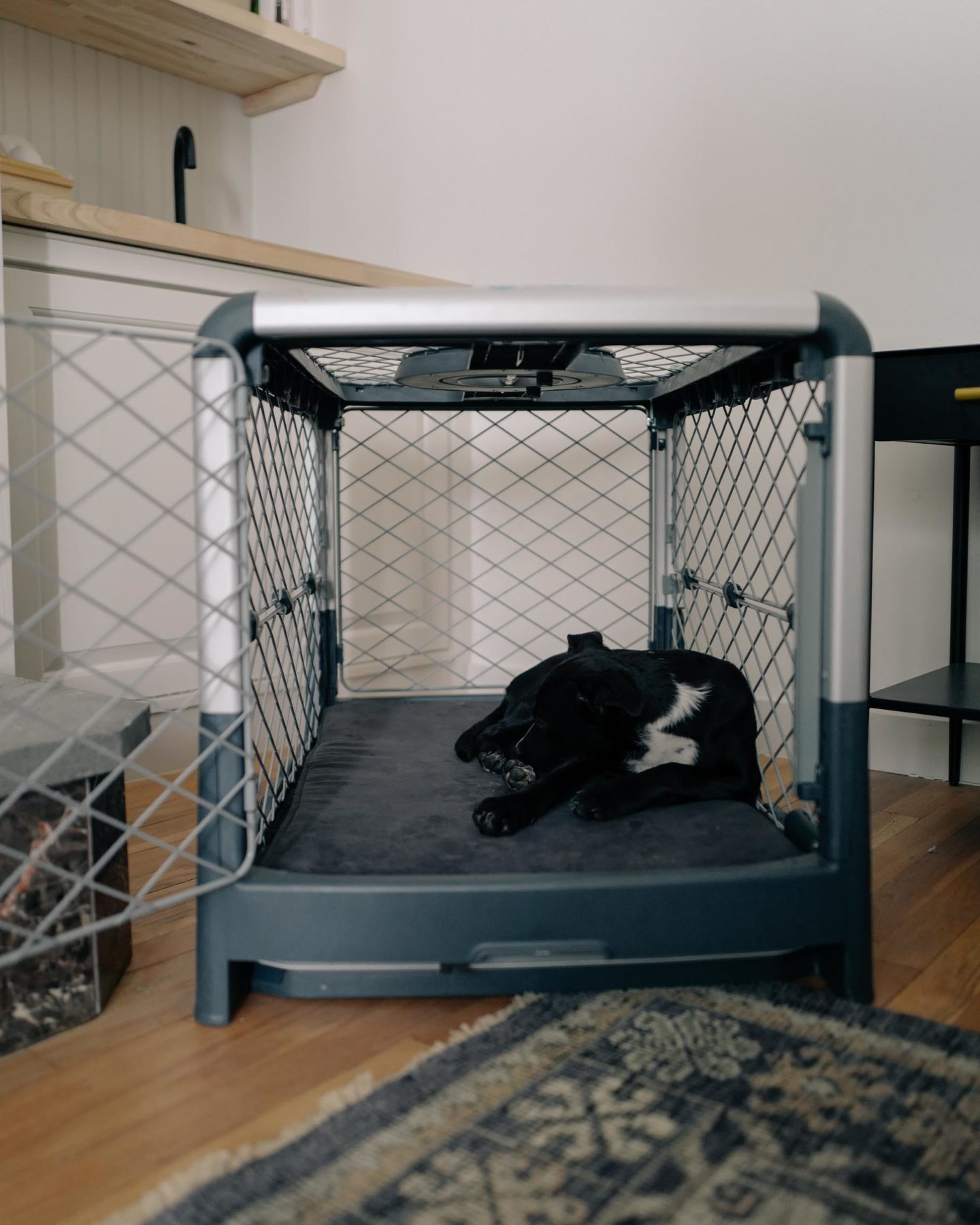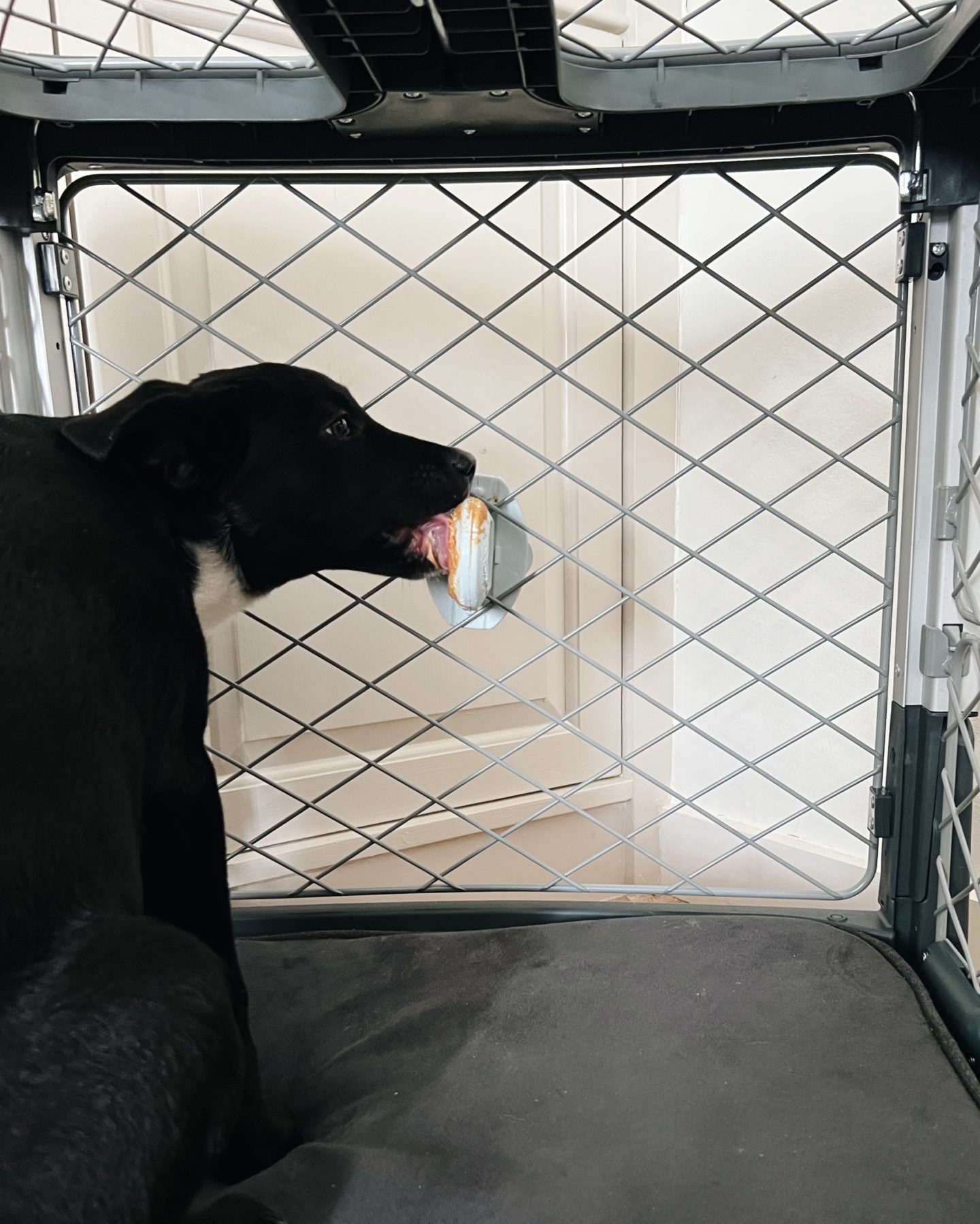Getting a new pet can be a lot of fun. Having a puppy is exciting, but it’s also hard work and at times, exhausting. It’s really important to train a new puppy as soon as possible. The moment you bring your puppy home you can start training. It will help bring order to your home, prevent bad habits, and set up a good and healthy relationship between you and your pet. Puppy training can feel like an overwhelming task especially for new pet owners, but I promise it’s actually very doable. Whether you are adopting a dog from a rescue or getting a dog from a breeder, every puppy needs proper training. Today I am rounding up some of the ways to train a new puppy so you can enjoy your pup and make it a happy and healthy member of your household. Don’t miss my YouTube video with 5 tips for training a puppy here.
Thanks to my brand partner Diggs Pet for sponsoring today’s post. Best known for their comfortable, stylish, ergonomic and exceptionally made crate the Revol, Diggs makes pet products through thoughtful design and innovation. Use code JESSANNKIRBY15 for 15% off your purchase.
10 Best Ways To Train A New Puppy
1. Crate Training
The moment you bring them home you can start crate training. The most important aspect of crate training is making it a positive experience. A crate is not a punishment tool. It’s a relaxing environment for your puppy (and adult dog) that will help with everything from keeping them safe to separation anxiety. Choosing the right crate for your dog is important. We absolutely love our Diggs Revol Dog Crate and Snooz Bed. It’s a collapsible crate that’s very easy to assemble, transport and store. It has easy to use doors, exceptional quality materials and includes a puppy divider so your pet can grow with their crate.
Create positive associations by feeding your puppy meals and treats in the crate. The Diggs Groov is an awesome crate training aid that attaches to the crate for a delicious puppy treat (coat it with peanut butter). Your puppy should start sleeping in their crate overnight right away (they may need several potty breaks when they are still young). You can gradually increase the amount of time your pup spends in the crate but never leave them in too long. Puppies can usually only hold their bladder for 3-4 hours max. A tired puppy is a happy puppy so make sure they have plenty of exercise and reward them with some yummy treats and time in their crate. They may cry and whine, that’s normal, but it’s also important they learn to self soothe and spend time in their crate with and without you around.
Benefits of Crate Training a puppy
- Creates a safe environment for your pet (prevents destructive behavior)
- Gives your pet a space of their own and place to rest or escape stress
- Helpful when recovery is necessary from an injury or medical procedure
- Encourages potty training (pups do not want to go potty in an enclosed space)
- Easier to crate train as a puppy than as an adult dog
- Helps with separation anxiety
2. Follow a Schedule
Keeping to a regular routine with your puppy will help them feel secure and understand what is expected of them. It will help with training and especially important, with potty training. It does not have to be rigid, but establishing, feeding times, potty breaks, playtime, and rest will help your puppy thrive. A puppy schedule should look something like this (as they get older they can have more freedom outside the crate and will need less potty breaks)
sample puppy schedule
- Early morning: Potty break right away (give praise and treat if still house training) and right back to crate
- Feed pup in crate. Leave the food down for no longer than 15 minutes. Pick up the bowl and no more food until the next meal (except for treats used for training).
- Another potty break after breakfast followed by playtime and training.
- The rest of the morning is nap time in the crate.
- Lunch time potty break and then back inside to eat in crate.
- After lunch potty break followed by exercise/training/socialization.
- Back in crate for afternoon nap.
- Late afternoon potty break followed by walk/play time.
- Back in crate until dinner.
- Dinner in crate
- Potty break/exercise after dinner.
- Bedtime potty break and back in crate for the night (before 6 months or if not yet house trained may need a late night potty break)
3. Potty Training
Potty training can be a frustrating and messy part of having a puppy, but with patience and consistency you can do it rather quickly. Following a schedule like the one above will drastically help with potty training as will crate training your pup. Puppies need to go out after any meal and playtime (if indoors). Use the same elimination spot for your pup when they are learning to go outside and as soon as pup goes potty say “Yes!” or “Good!” followed by a treat. Do not punish your pup for accidents inside.
4. Socialization
Socializing is a key way to teach your puppy about all the sights, sounds and smells in the world around them. Take it slow and introduce them to a wide variety of experiences, people and places with lots of praise and treats along the way. Socialization can be a variety of things from walking in a busy place to observing different people and and environments. Once they are vaccinated puppy class is another important part of socialization (more on that below).
5. Positive Reinforcement
Positive reinforcement is a great way to establish trust with your pup and help with the training process. Positive reinforcement rewards behaviors you want for example you ask your dog to sit, and when they do it you give them a treat. One of the keys to positive reinforcement is immediately rewarding the desired behavior. This way your dog does not get confused about what you want from them. Many dogs are food motivated which makes treats a great tool for positive reinforcement training. You can also use praise and high value toys. The key is to be consistent and quick. In the beginning don’t worry too much about using lots of treats for training. You can start using treats less when your pup has mastered a skill.

nap time in the diggs revol crate 
enjoying a treat with the diggs groov
6. Basic Commands
Puppies can begin very simple training as soon as you bring them home. Starting with basic commands will give your pup confidence and help them learn what is expected of them. It will also help show you are the leader and give you more control over your dog’s behavior. It’s important to use simple short commands for example “Pepper sit” instead of “Hey Pepper can you sit for me?” Here are some of the basic commands to work on with your puppy:
Basic commands
- Sit
- Stay
- Down
- Look
- No
- Leave it
- Come
- Wait
- Off
- Take it
- Place or Bed
7. Recall
You can start teaching your pup recall “come” as soon as you bring them home. This is one of the most important cues to teach your pup early on. Ultimately the goal is to get your pup to come to you when they are called even when they are distracted. You want to start practicing recall on leash in a minimally distracting environment. You can work your way up to more and eventually off leash. To start, use a long lead and let your pup wander off, then say their name and “come.” If they do not come you can tug on the leash until they turn around and start running back to you. Use lots of praise and high value treats when working on this command. Here is a great guide on teaching recall.
8. Training Classes
Puppy training classes are an important part of socialization and learning for dogs. Each training session will help you as dog owners become more confident and your pup learn good behavior and basic commands. A few places to find puppy training classes can include local animal shelters, pet stores or qualified trainers. I had a great experience doing the puppy class at Petsmart in our area.
9. Daily Exercise
A tired pup is a happy pup. Daily exercise is so important for the health and happiness of your dog. When puppies are young they can only handle short bouts of play/exercise but you can increase this over time. A mix of stimulating play, training and leash walks are all important as you train your puppy. Check out Diggs collars, leashes and poop bag dispensers for your walking needs (use code JESSANNKIRBY15 for 15% off).
10. Consistency Is Key
Feeling overwhelmed? Don’t be. Yes, puppies are a lot of work but consistency is key. Your hard work will pay off for many years to come. Some days may look better than others and that’s ok. Even if you only have 5 minutes for training a day, dedicate it to teaching your puppy good behavior and in time you will see what a difference it makes.
Disclosure: if you buy something through the links on this blog, we may earn an affiliate commission. We only feature products we would personally recommend. Thank you for your support.


